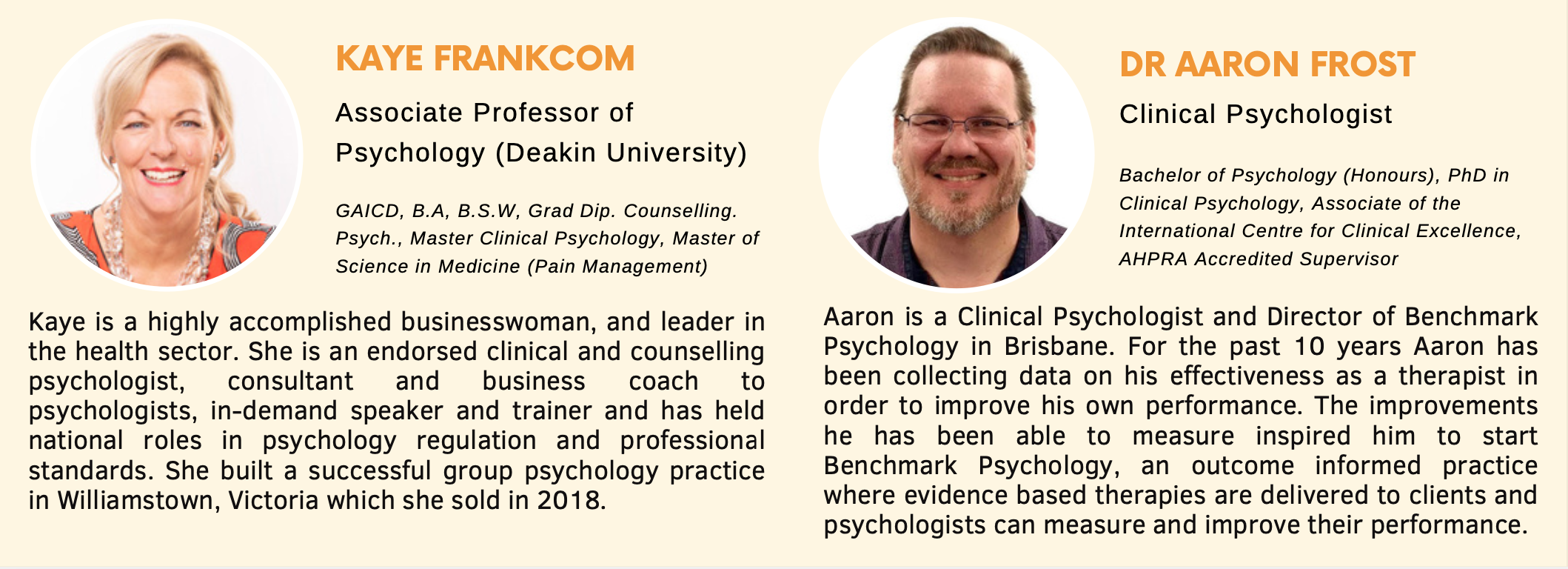The Four Pillars of Private Practice:The get it done implementation!
A workshop series with Kaye Frankcom & Dr Aaron Frost
Online starting July 2024
Write your awesome label here.
About the book and workshops

The Four Pillars of Private Psychology Practice
2024 Creating Impact Dates
17th July 2024: 7pm to 9pm AEST
The client: Making feedback and transparency central to therapy work
31st July 2024: 7pm to 9pm AEST
Getting it Done!
14th August 2024: 7pm to 9pm AEST
The therapist: how do you know what you/they are doing is working?
23rd October 2024: 7pm to 9pm AEDT (PLEASE NOTE DAYLIGHT SAVINGS TIME)
Getting it Done!
6th November 2024: 7pm to 9pm AEDT
The Business of healthcare: let’s talk numbers, profit and sustainability
2nd October 2024: 7pm to 9pm AEDT
The Practice: Methods that help you to know that the practice is effective and safe.
20th November 2024: 7pm to 9pm AEDT
Getting it Done!
28th August 2024: 7pm to 9pm AEST

